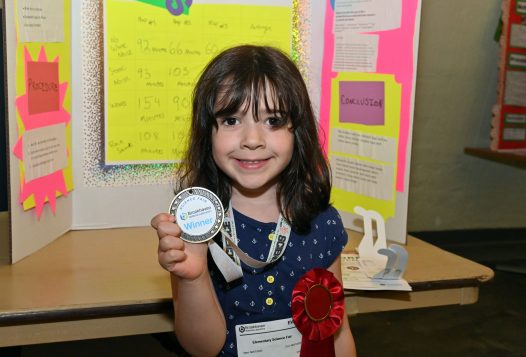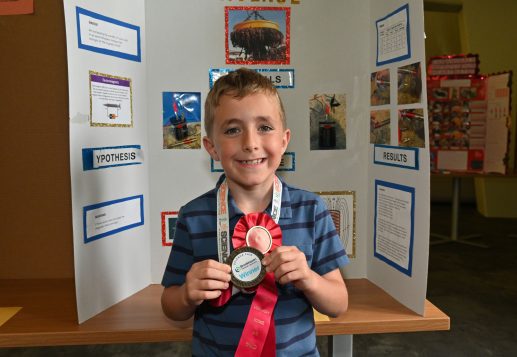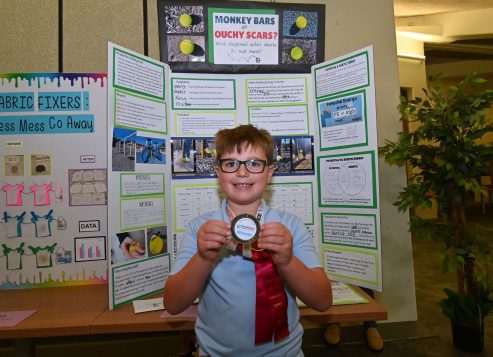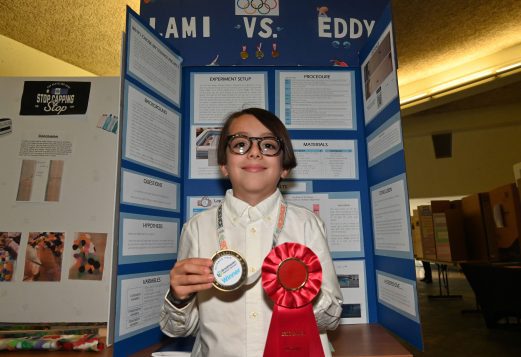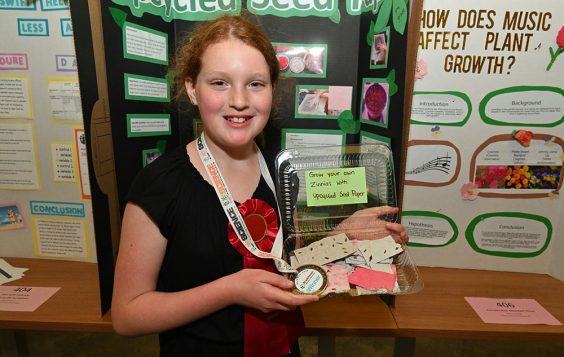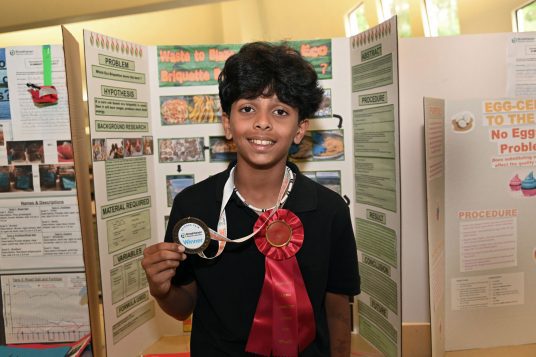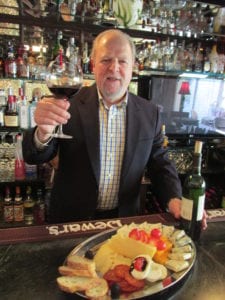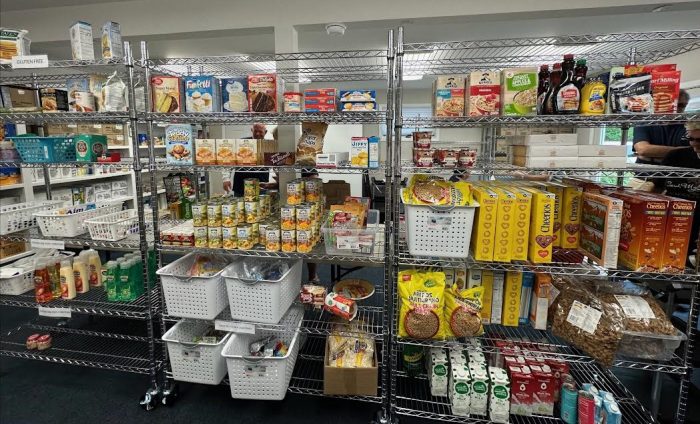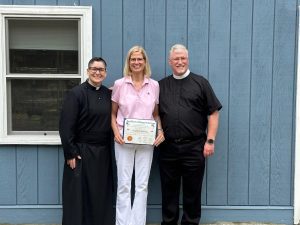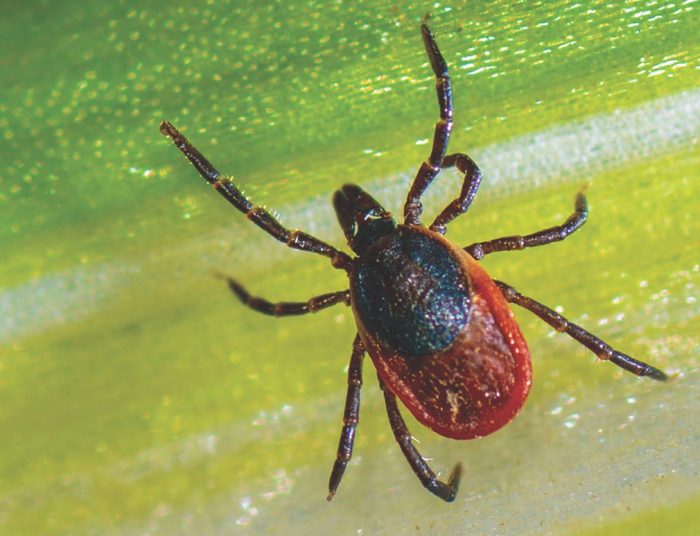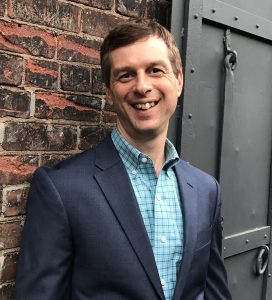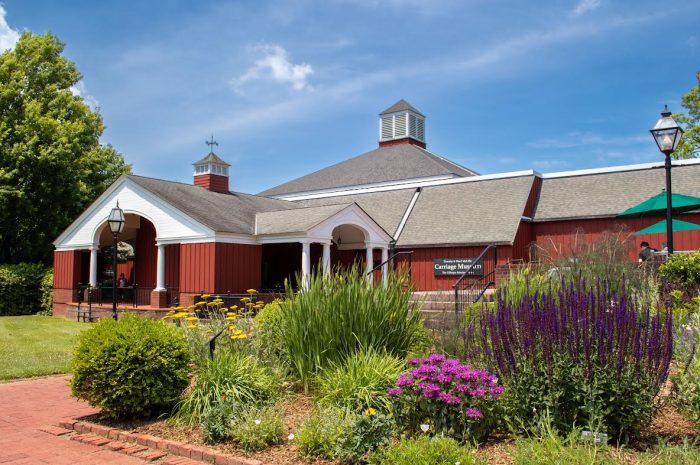Thursday June 19
Juneteenth Celebration
Join Walt Whitman Birthplace, 246 Old Walt Whitman Road, Huntington Station for an evening honoring Juneteenth from 5 p.m. to 7 p.m. with poetry readings, an African American artifacts display, live music, sweet treats and more. Free. www.waltwhitman.org
Friday June 20
Buffet Dinner Fundraiser
North Shore United Methodist Church, 260 Rte. 25A, Wading River will host a Buffet Dinner Fundraiser to benefit their Rwanda Youth Mission team at 6 p.m. Enjoy a fabulous meal featuring ethnic specialties, mocktails, scrumptious desserts with music by the Riverhead High School Orchestra Quartet. Suggested donation $30, but donations of any amount are welcomed, and will fund the team’s projects at the Rwanda orphanage in July. To reserve your seat, call 631-929-6075.
Third Friday at the Reboli
The Reboli Center for Art and History, 64 Main St., Stony Brook continues its Third Friday series with a presentation by Peter Nettesheim, an artisan and mechanic currently being exhibited in the gallery’s exhibition, Getting There, from 6:30 p.m. to 8:30 p.m. Light refreshments will be served. Free. No reservations required. 631-751-7707
Saturday June 21
AHEPA Car Show
AHEPA Chapter 319 presents their 4th annual Car, Bike and Truck Show fundraiser at the Greek Orthodox Church of the Assumption, 430 Sheep Pasture Road, Port Jefferson from 10 a.m. to 4:30 p.m. with prizes, music, food and raffles. Free for spectators. 516-885-7445
Community-Wide Yard Sale
Time to shop! Three Village Historical Society, 93 North Country Road, Setauket will hold their Annual Community-Wide Yard & Antiques Sale from 9 a.m. to 2 p.m. From vintage goods and antiques to handmade crafts and one-of-a-kind art, there’s something for every kind of thrifter, browser, and buyer. 631-751-3730
Rocky Point Garden Tour
Join the Rocky Point Civic Association for their annual Rocky Point Garden Tour, a self-guided tour through nine beautiful home gardens plus a docent led tour of the historic Hallock Homestead home and gardens, on Saturday, June 21 from 10 a.m. to 3 p.m. In addition, artwork, plants and garden supplies will be available for sale at several gardens. Held rain or shine. $20 per person. Tickets are available at Heritage Paint & Home Design, 637 Route 25A, Rocky Point and Flowers on Broadway, 43 Broadway, Rocky Point. For more information, call 631-521-5726.
Pollinator Festival
New York State Parks will host a Pollinator Festival at Sunken Meadow State Park, Sunken Meadow Parkway, Kings Park, Field 1 from 11 a.m. to 3 p.m. Main attractions include a live butterfly exhibit, beekeeper demonstration, native plant sale, seed library, face painting, live music, games, vendors and more. Free. 631-269-4333
Sherwood-Jayne House Tours
Sherwood-Jayne Farm House (c. 1730), 55 Old Post Road, Setauket will be open for tours at 11 a.m., noon, 1 p.m. and 2 p.m., courtesy of Preservation Long Island. This guided tour explores the first and second floors of the house. Tickets are $10 adults, $5 ages 10 to 18, free for children ages 9 and under. To reserve your spot, visit www.preservationlongisland.org/tours/.
Family Fun Weekend
Celebrate summer at a Family Fun Weekend the Shoppes at East Wind, 5720 Route 25A, Wading River today and June 22 from 11 a.m. to 5 p.m. Enjoy music, games, face painting, bounce house, crafts and so much more. Free admission. 631-846-2372
Juneteenth Celebration
Heckscher Park, 2 Prime Ave., Huntington will host a Juneteenth Celebration from 3 p.m. to 6 p.m. Highlights of the day will include historic reflections, poetry, music, dancing, food trucks, giveaways, raffles, cultural experiences and scholarships. In the event of rain, the ceremony will move to Huntington Town Hall. 631-351-3000
Bingo Night Fundraiser
Centereach Fire Department Rescue Company 4, 9 South Washington Ave., Centereach will host a Bingo Night fundraiser from 6 p.m. to 10 p.m. Tickets are $25 and include a bingo board you can use all night long. Additional boards are only $5 each. Light snacks & refreshments will be provided. Email [email protected] for tickets. 631-588-8652
Sunday June 22
Family Fun Weekend
See June 21 listing.
Elks Car Show
Smithtown Elks Lodge #2036, 120 Edgewood Ave., Smithtown presents its 5th annual Elks Smithtown USA Car Show on from 8 a.m. to 3 p.m. with antique, classic, custom, muscle and special interest vehicles. Fee is $5 for spectators, kids under 12 are free. Rain date is June 30. 631-873-6068
St. Anthony’s Car Show
The Police Surgeons Benevolent Association in association with the Centurion Cruisers Car Club hosts a benefit car show for SCPD police officer Brendan Gallagher at St. Anthony’s High School, 275 Wolf Hill Rd., Huntington from 9 a.m. to 2 p.m. with cars, trucks, street rods, muscle cars, police/fire service vehicles and antiques. Admission is $5 for spectators. 631-901-3608
All Ford Car Show
The Mustang and Shelby Club of Long Island will present an All Ford Car Show at Ford of Port Jeff, 44869 Nesconset Highway, Port Jefferson Station from 9 a.m. to 4 p.m. Free for spectators. Rain date is July 6. 631-371-1432
All Abilities Expo
Rescheduled from May 31. Heckscher Park, 2 Prime Ave., Huntington hosts an All Abilities Expo, celebrating individuals of all abilities, from 10 a.m. to 2 p.m. The family friendly event will feature therapy dogs, interactive exhibitor tables, inclusive games and activities, live entertainment, community resources, sensory-friendly experiences, food trucks and more. Free. 631-351-3000
bluerace in concert
The Long Island Music and Entertainment Hall of Fame, 97 Main St., Stony Brook presents a concert by bluerace (Pop/Rock) from 3 to 4 p.m. The event is free with general admission ticket purchase. 631-689-5888, www.limusichalloffame.org
Benner’s Farm Concert
The Good Earth Sound Stage at Benner’s Farm, 56 Gnarled Hollow Road, East Setauket welcomes Chic and Friends dance and hoot for a concert at 4 p.m. Bring seating for this outdoor event. $15 donation at the door. 631-689-8172
The Band Easy Street in Concert
Celebrate St. James kicks off their summer concert series at Celebrate Park, 369 Lake Ave., St. James with The Band Easy Street at 7 p.m. Bring seating. 631-984-0201
Monday June 23
Community Blood Drive
The Setauket Fire Department Auxiliary will hold their semi-annual Blood Drive at the Setauket Fire Department located at 394 Nicolls Rd, Stony Brook from 2 p.m. to 8 p.m. To schedule an appointment, call 631-444-3662. Walk-ins welcome.
Country Line Dancing
Celebrate St. James presents Country Line Dance lessons with Natalie at the St. James Community Cultural Arts Center, 176 2nd St., St. James from 7 p.m. to 8:30 p.m. Come learn the hottest dances! $15 per person at the door. Please RSVP at www.celebratestjames.org. 631-601-5109
Tuesday June 24
NSJC Social Club event
North Shore Jewish Center Social Club, 385 Old Town Road, Port Jefferson Station invites the community to learn about The Nicholas Brothers – phenomenal dancers in the 30’s and 40’s are featured in several movie clips for your amazement at 11 a.m. Bagels and coffee will be served. $5 per person, $4 members. 631-928-3737
SPIRITUS Festival
The SPIRITUS Chamber Festival, titled “Tales of Yesterday, Today, and Tomorrow” will be held at the St. James Episcopal Church, 490 North Country Road, St. James today at 7 p.m.; Unitarian Universalist Fellowship of Stony Brook, 380 Nicolls Road, East Setauket on June 26 at 7 p.m.; the Long Island Museum, 1200 Route 25A, Stony Brook on June 28 at 2 p.m.; and Setauket Presbyterian Church, 5 Caroline Ave., Setauket on June 29 at 7:30 p.m. All concerts will be followed by a reception. Tickets range from $15 to $35. www.spiritusfestival.org
Nic + Desi at the Engeman
The John W. Engeman Theater, 250 Main St., Northport continues its special events series with Nic + Desi in concert at 8 p.m. The couple will sing, dance and share their love story in this duo celebration of classic and contemporary Broadway! Tickets are $45. To order, call 631-261-2900 or visit www.engemantheater.com.
Wednesday June 25
Cruise Night at The Shoppes
The Shoppes at East Wind, 5720 Route 25A, Wading River hosts a Cruise Night Car Show tonight and every Wednesday through October from 5 p.m. to 9 p.m. Visit the Shoppes, enjoy a bite to eat and then check out the fine array of classic cars in the parking lot. 631-929-3500
St. Anthony’s Family Festival
Fr. Thomas Judge Knights of Columbus celebrates its 32nd annual St. Anthony’s Family Feast and Festival at Trinity Regional School, 1025 Fifth Ave., East Northport tonight, 26 and 27 from 6 to 11 p.m. and June 28 from 3 to 11 p.m. Featuring rides, games, food, craft beer, live entertainment by Cirque Cyber, live music nightly. Fireworks on June 28. Free admission, pay-one-price rides or individual rides. 631-262-1891
Library Summer Concert
Harborfields Public Library, 31 Broadway, Greenlawn presents its annual summer outdoor concert featuring The HooDoo Loungers at 7 p.m. The band take their inspiration from the gri gri of Dr. John to the swingin’ rock n’ roll of Fats Domino and blend it all together with a bit of classic soul and New Orleans swing for an inspired and original musical gumbo. This concert is open to the public, and there is no registration required. Rain date is July 9. 631-757-4200
Thursday June 26
SPIRITUS Festival
See June 24 listing.
St. Anthony’s Family Festival
See June 25 listing.
Arts & Alzheimer’s Conference
The Long Island Museum, 1200 Route 25A, Stony Brook will host the 9th Annual Arts & Alzheimer’s Conference from 9:30 a.m. to 3 p.m. The full-day program will feature presentations, activities and performances from local and national experts on how the arts can help increase engagement, and will help attendees discover the vast and enriching opportunities available for individuals living with Alzheimer’s disease and other forms of memory loss. Free. Space is limited and pre-registration is required by calling 631-751-0066, ext 211, or emailing [email protected].
HHS Lunch & Learn
Huntington Historical Society continues their Lunch & Learn series at Red Restaurant, 417 New York Ave., Huntington from noon to 12:30 p.m. LV Kuhn will make a presentation titled History of Wine looking at the origins of viticulture, the rise of great wine regions and estates, and some interesting facts and anecdotes from across the world. Price is $55, $45 members and includes a gourmet two-course meal and dessert. Cash bar available. To register, visit www.huntingtonhistoricalsociety.org.
Community Blood Drive
Sachem Public Library, 150 Holbrook Road, Holbrook will host a community blood drive in Community Room B from 1:30 p.m. to 7:30 p.m. To make an appointment, call 917-566-8537.
Summer Thursday at the LIM
The Long Island Museum, 1200 Route 25A, Stony Brook kicks off their Summer Thursdays series with an outdoor performance of Jane Austen’s Emma by the EastLine Theater at 5:30 p.m. Emma Woodhouse is clever, educated, and energetic…and in imminent danger of going mad with idleness. In a time when respectable ladies are expected to sit quietly at home, she desperately needs projects—and prides herself on matchmaking. But where Emma’s considerable energies focus, screwball comedy ensues. Bring a picnic, seating and celebrate Jane Austen’s 250th year! Free. www.longislandmuseum.org.
Native American Drumming
All Souls Parish House, 10 Mill Pond Road, Stony Brook will host a Native American Drumming session from 7 p.m. to 8:45 p.m. Led by elder drummer, Ric Statler, drumming meditation seeks to integrate the physical, mental, emotional, and spiritual parts of the human self, creating a state of well-being. Call 631-655-7798 for more information.
Film
LIMEHOF Local Filmmakers Series
The Long Island Music and Entertainment Hall of Fame (LIMEHOF), 97 Main St., Stony Brook will host a screening of a short comedy, drama, and thriller film block by West Babylon director Joe Pomarico on Saturday, June 21 at 1 p.m. followed by a Q&A. This event is part of LIMEHOF’s Monthly Local Filmmakers Series, which places the spotlight on Long Island-based movie directors and their films. The event is $10 for the screening and Q&A only (no access to the exhibits) at the door or pay museum admission fee for film screening and full access to exhibits. www.limusichalloffame.org
Theater
‘(Mostly) True Things’
(mostly) TRUE THINGS, a compelling evening of true, personal stories with a twist, has its next performance at The Performing Arts Studio, 224 E. Main St., Port Jefferson on June 22 at 4 p.m. with stories on the theme ARRIVAL. Featuring Elizabeth Bosjza, Calvin Cato, Rita Rigano, DEborah Singer and host Jude Treder-Wolff. Tickets are $20 at www.eventbrite.com, $25 at the door (cash only).
‘South Pacific’
The John W. Engeman Theater, 250 Main St., Northport continues its Main Stage season with South Pacific from May 15 to June 29. This beloved musical takes place on a South Pacific island during World War II where two love stories are threatened by the dangers of prejudice and war. With songs such as “Some Enchanted Evening,” “I’m Gonna Wash That Man Right Outa My Hair,” “Younger Than Spring-time,” and “There Is Nothin’ Like A Dame,” South Pacific’s lush score contains some of the best songs ever written by Rodgers & Hammerstein. For more information and to order, call 631-261-2900 or go to www.engemantheater.com.
‘Midsummer Night’s Dream’
The Carriage House Players at the Suffolk County Vanderbilt Museum in Centerport continues their 36th annual Shakespeare in the Courtyard Festival with Midsummer Night’s Dream from June 1 to June 29. Performances are held on the Vanderbilt mansion courtyard stage on Wednesdays and Fridays at 8 p.m. and Sundays at 7 p.m. Tickets are $20 adults, $15 seniors and children under age 12. To order, visit www.vanderbiltmuseum.org. 516-557-1207
‘Half Time’
Theatre Three, 412 Main St., Port Jefferson closes its 45th Mainstage season with Half Time from May 24 to June 22. The incredible true story of ten determined dreamers who audition to dance at half time for a major basketball team and have three things in common: they love to dance, they have something to prove, and they are all over 60 years old! Tickets are $40 adults, $32 seniors and students. To order, call 631-928-9100 or visit www.theatrethree.com.
‘H.M.S. Pinafore’
The classic comic opera H.M.S. Pinafore heads to Star Playhouse at Suffolk Y/JCCC, 74 Hauppauge Road, Commack on June 29 at 3 p.m., courtesy of the Gilbert & Sullivan Light Opera Company of Long Island. The comical plot centers on the love story of Josephine, the Captain’s heart-driven daughter, who is torn between devotion and duty. Admission is $35 for adults at the door (seniors/students $30), $30 for adults in advance (seniors/students $25). For further information, call 516-619-7415 or visit https://gaslocoli.org/tickets.
‘Footloose The Musical’
Up next at the John W. Engeman Theater, 250 Main St., Northport is Footloose The Musical from July 10 to Aug. 24. When Ren and his mother move from Chicago to a small farming town, he is prepared for the inevitable adjustment period at his new high school. But he’s not prepared for the rigorous local edicts, including a ban on dancing instituted by the local preacher. Based on the hit 1984 movie, the musical contains all of the hit songs including “Let’s Hear It For The Boy,” “Almost Paradise,” “Holding Out For A Hero,” and of course “Footloose!” For tickets, call 631-261-2900 or visit www.engemantheater.com.
‘Much Ado About Nothing’
The Minstrel Players present William Shakespeare’s Much Ado About Nothing at Trinity Episcopal Church, Houghton Hall, 130 main St., Northport on July 19 and July 26 at 8 p.m. and July 20 and July 27 at 3 p.m. Tickets are $20 adults, $15 seniors and students. To order, all 516-361-7232 or visit www.theminstrelplayersinc.org.
Class Reunions
— Rocky Point High School Class of 1975 will hold their 50 year reunion at East Wind in Wading River on September 12 from 6 p.m. to 10 p.m. $150.00 per person includes reception, hors d’oeuvres, buffet dinner, open bar and dessert. Contact Andrea at 631-774-2474 or [email protected]
Farmers Markets
Huntington
Elm Street parking lot at 228 Main St., Huntington on Sundays from June 1 through Nov. 23 from 8 a.m. to 12:30 p.m. 631-944-2661
Lake Grove
Southwestern quadrant of Smith Haven Mall parking lot along Middle Country Road year-round on Saturdays (pickles, honey) and full market with vendors on Sundays. Hours are 10:30 a.m. to 4:30 p.m. both days. 516-444-1280
Northport
Cow Harbor Park parking lot, at the corner of Main Street and Woodbine Ave. in Northport on Saturdays from June 7 through Nov. 22 (except Sept. 20) from 8 a.m. to 12:30 p.m. 631-662-7244
Port Jefferson
Harborfront Park, 101 E. Broadway, Port Jefferson on Sundays from 9 a.m. to 2 p.m. from May 18 through Nov. 23. 631-802-2160
St. James
St. James Lutheran Church, 230 2nd Ave., St. James hosts a farmers market in its parking lot every Saturday from 9 a.m. to 1 p.m. from May 31 through October 25. 631-403-7711
Setauket
Three Village Historical Society, 93 North Country Road, Setauket on Fridays from May 16 through September (except Sept. 19) from 3 to 7 p.m. and October from 3 p.m. to 6 p.m. 631-751-3730
CALENDAR DEADLINE is Wednesday at noon, one week before publication. Items may be mailed to: Times Beacon Record News Media, P.O. Box 707, Setauket, NY 11733. Email your information about community events to [email protected]. Calendar listings are for not-for-profit organizations (nonsectarian, nonpartisan events) only, on a space-available basis. Please include a phone number that can be printed.

